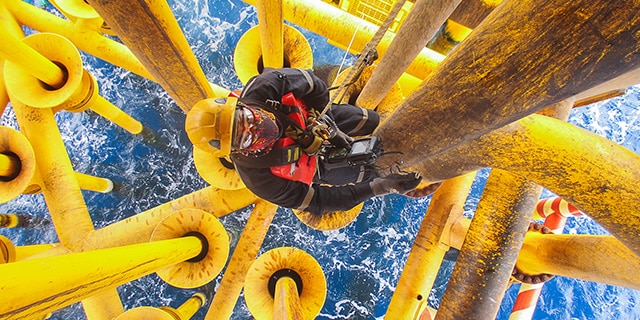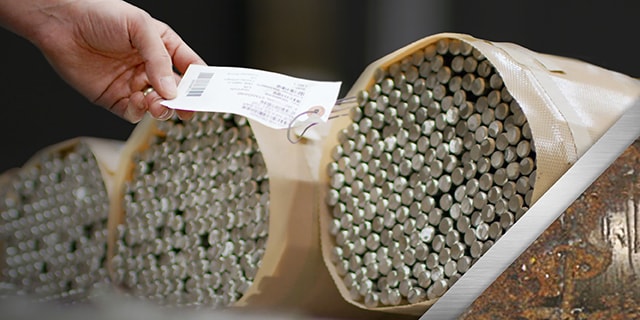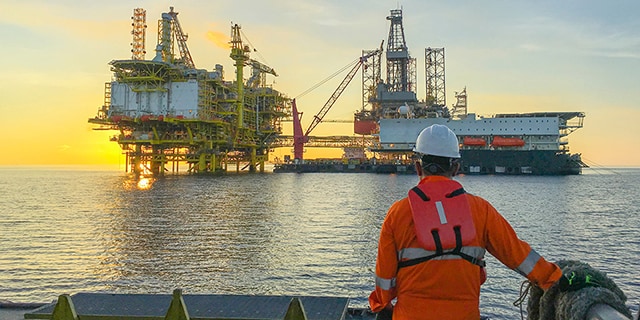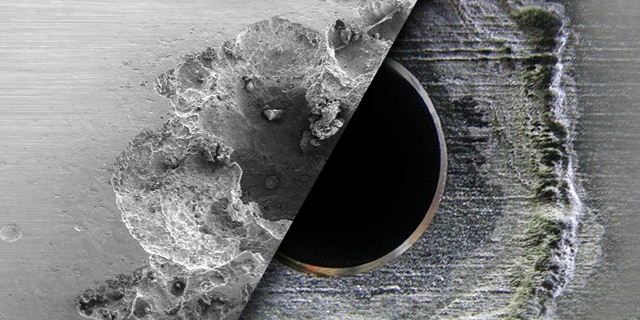Enhance Safety and Save with Optimized Materials

Why Optimized Fluid System Material Selection Can Help Improve Offshore Safety and Reduce Costs
Cost optimization is one of the most important goals for owners of offshore oil and gas platforms and floating vessels—second only to ensuring safe and compliant operation throughout the platform’s life span.
Prioritizing both goals can be accomplished by specifying appropriate materials that can be used in a wide range of fluid systems and components throughout the platform. For example, 316 stainless steel tubing and tube fittings offer good corrosion resistance and make for an economical choice in many platform applications. Some more challenging applications, however, will require enhanced corrosion resistance offered by more robust alloys like super austenitic 6-moly or super duplex 2507, which come with a higher upfront cost.
Offshore environments present challenging operational conditions—and it can be tempting to specify these more robust alloys for all tubing and fittings throughout the platform. But given the miles of tubing and thousands of fittings required, this choice can substantially increase costs while providing little to no benefit in applications that operate under more mild conditions. It is also a common assumption that materials used for tubing and tube fittings must match, but that is not always true when using two different, compatible materials that can resist galvanic corrosion.
Instead, specifying engineered combinations of 316 SS and more robust alloys throughout the platform can result in high levels of safety while helping to keep costs manageable. Here is what owners should know about the types of corrosion that can occur in a variety of offshore environments, and how to apply a bit of materials science knowledge to make the right selection for their specific platform:
Understanding the Corrosion Threat
The tubing and tube fittings that make up various platform applications—chemical injection skids, hydraulic power units, topside umbilical terminations, wellhead control panels, and more—are respectively susceptible to different forms of corrosion. Tubing can succumb to pitting and crevice corrosion, and tube fittings can be threatened by stress cracking corrosion. Each of these types can result in tube or fitting failure, and ultimately, a leak that may be a significant safety threat to your personnel.
Pitting and Crevice Corrosion in Tubing
Pitting and crevice corrosion occur on the tubing surface in concentrated areas where the metal’s protective, chromium-rich oxide layer breaks down due to exposure to chlorides commonly found in salt water.
Pitting corrosion appears as small cavities, or pits, in the metal’s surface. Crevice corrosion is essentially the same phenomenon but is concentrated in tight crevices—most commonly between tubing and tube clamps, underneath dirt and deposits on tube surfaces, or between adjacent tubing runs.
Robust materials with higher Critical Pitting Temperatures (CPT) and Critical Crevice Corrosion Temperatures (CCCT) such as 6-moly alloys 254 or 6HN (UNS N08367), super duplex alloy 2507, or nickel alloys 825, 625, C-276, or 400, are a good defense against these corrosion threats. Plastic clamps can also be used to help mitigate crevice corrosion. Some new plastic clamps that allow for drainage of liquids can also be used.
Chloride Stress Corrosion Cracking (SCC)
SCC can become a prevalent issue in high-chloride environments when tube fittings are under tensile stress, especially when lower-grade tube fittings are used. Fitting assembly and system pressurization can cause a stress crack to form on the fitting’s nut. Chlorides can then cause these cracks to branch and proliferate. Eventually, the nut may fail by cracking open, sometimes suddenly.
The same, more robust alloys that can reduce the likelihood of pitting and crevice corrosion can also help reduce the risk of CSCC. However, high-quality 316 SS that is formulated with elevated nickel (12% minimum) and chromium (17% minimum) content, which exceeds the minimum requirements of applicable ASTM standards, can be just as effective in mildly and moderately corrosive environments, providing a way for owners to optimize cost while maintaining safe systems.
Optimizing Your Specification
Knowing how different types of corrosion impact tubes and tube fittings respectively, and the material types that can reliably resist each corrosion type, a solution becomes clear: Robust alloy tubing paired with high-quality 316 SS tube fittings can deliver reliable, cost-optimized corrosion control and enhanced system safety.
There are a few other qualities to consider when selecting tube fittings. In addition to heightened nickel and chromium contents in 316 SS, owners should look for tube fittings with hardened ferrules that create a robust, reliable tube grip. This helps to create a leak-tight seal and deliver excellent vibration resistance. To help verify performance, ask your supplier to provide test reports of that fitting and tubing combination. It may also be wise to inquire about quality controls that are in place during manufacturing to ensure quality and performance.
Finally, keep in mind the importance of proper installation methods. Even if your materials have been optimized, a poor installation can negatively impact performance. Ensure platform technicians know how to properly handle tubing and assemble tube fittings to ensure reliable, leak-tight operation. Your supplier may be able to offer training opportunities to enhance the knowledge of your personnel.
Ultimately, selecting an engineered combination of materials for platform fluid systems will depend on your operating and environmental conditions, your preferences, risk tolerance, and your budget. But there are a variety of operating environments where the opportunity to save cost on your connections can be done safely with the right supplier.
Interested in learning more about the right materials selection and combinations for your offshore fluid systems? Get in touch to find out how Swagelok can help you optimize materials today.
Related Articles

Material Matters: Selecting the Right Material for Corrosion Resistance
An offshore platform can have nearly 50,000 feet of tubing, more than 20,000 fluid system components, no fewer than 10,000 fittings, and as many as 8,000 mechanical connections. No wonder choosing corrosion-resistant material isn’t easy. Learn how to make choices right for your application.

How Training Can Minimize Risk on Oil and Gas Platforms
Proper training on critical fluid system activities is important on oil and gas platforms. Learn how the right training can help prevent accidents.

Pitting Corrosion vs. Crevice Corrosion: Identifying the Differences
Stainless steel corrosion in tubing systems is a leading cause of profit loss for oil and gas companies every year. Learn how to identify & combat two main types of corrosion, pitting corrosion and crevice corrosion, with tips from Swagelok experts.

